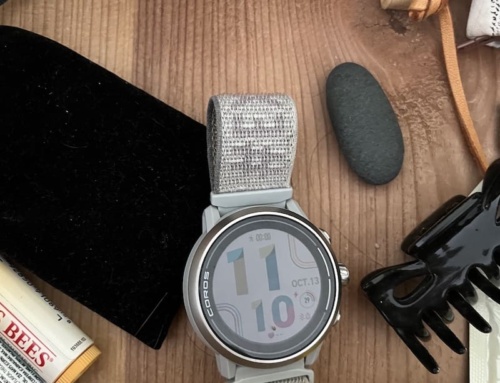
You know you’re at a pelvic floor physical therapist when this kind of art adorns the walls. Source
This week, apparently, is Dimity deep dive week on the Another Mother Runner blog. On Tuesday, we went deep into my protein intake, and today, we’re headed into my glutes and pelvic floor. Good times, amiright?
For the past five or so months, I’ve been having some piriformis (deep glute) and lower back pain issues. The fun started in November, and I finally saw a physical therapist in early January and have been going regularly ever since. The pain is receding incrementally, which is both great news and also slightly frustrating in that be-patient-and-diligent way that most physical therapy requires. (Unfortunately, there’s no eliminate-pirifmoris-pain pill I can take nightly with my fish oil and magnesium.)
I won’t bore you with the details, but it’s definitely a nerve-centric issue that is best treated by a variety of methods. And while you may not be suffering from exactly what I am, I have two things I wanted to share with you because both have been immensely helpful as I recover.
The first: The Shotgun Technique
This is a super simple Muscle Energy Technique (MET) to realign your pelvis; physical therapists apparently call it the Shotgun Technique, but I call it the belt/foam roller move. Physio-pedia recommends it for low back pain, sacroiliac joint dysfunction, and chronic pelvic pain, among others. My physical therapist does it when I’m on the table, and it gives me so much relief, I asked her how to replicate it at home.
It is truly a game changer for me. When I begin to feel pain—whether I’m in bed or at my desk or in the kitchen—I’ll get on the ground and put a belt around my knees and push out on the belt for six reps of six seconds. Then I put a foam roller or yoga block between my knees and push into the roller for six reps of six seconds each. (Note: you may hear your pelvic bones realigning when you push your knees in–it’s not a cause for concern, and is apparently why it’s called the shotgun technique.)
FYI: I asked Christy Diller about this move in our most recent Ask the PT session in Many Happy Miles, and she said it can be a very effective move to realign your pelvis, and won’t cause harm if your pelvis doesn’t need to be aligned. That said, Physiopedia mentions that contraindications/precaution for those who have acute trauma; fracture of the pelvic girdle; moderate to severe joint instability; suspected infectious causes of pelvic pain, pregnancy, severe osteoporosis, or moderate to severe muscle strains in the abdominal or pelvic region.
The second helpful thing: A Pelvic Floor Physical Therapist
While I definitely got some relief from traditional physical therapy, after about five sessions, my regular PT suggested seeing a pelvic floor PT to see if there was an internal piece to the pain puzzle.
Despite knowing how helpful pelvic floor PTs can be, I’ve never seen one personally; I’ve outright pelvic issue like prolapse or have another therapist recommend it, so it just didn’t cross my mind.
But my first visit provided such immediate relief, I’m slightly regretful that I didn’t ever consider a Pelvic Floor PT when chronic back/hip/hamstring pain eventually caused me to stop running.
I will admit I was pretty anxious before the first appointment, but within two minutes of sitting in the pink armchair of her office, I was at ease. We had a thorough discussion about my symptoms and what she was planning to do (with my consent, of course). She left the room, I got undressed from the bottom down, got up on her table (no stirrups), and covered my lower half with a paper covering. My therapist put her gloved, lubricated finger in my vagina (which is WAY less painful than a speculum, btw) and used it to feel for tight spots in my pelvic floor, which hold tension and have trigger points just the way other muscles do.
She checked it with me regularly to see how I was doing as she put pressure on tight spots, and she talked me through breathing exercises . At no time did I feel uncomfortable—minus, of course, the discomfort that comes with releasing trigger points—and I really appreciated how openly she talked about my pelvic area, as if we were talking about my knee. She also warned me that pelvic floor PT can bring up a lot of emotions; it’s a sensitive area, both emotionally and physically. Knowing that was helpful because I have been surprisingly teary on the table, and felt pretty emotionally wiped after our first appointment.
It turns out, the trigger points radiated right out to both hips and my glute that has been given me so much trouble, which is why I wanted to write about this. I’m going to put this in bold because, if you’re like me, you probably have not considered a pelvic floor PT unless you have direct pelvic issue. But if you’re having unresolved glute, hip, and/or lower back pain and have been doing all the things with little relief, you might want to consider having a pelvic floor PT take a look. (Here’s a directory to find one in your area.)
I’ve been back to pelvic floor PT four times now, and each time, I can sense things are going in the right direction. My glute definitely still speaks to me loudly at times, but with patience, plenty of belt/foam roller releases and other homework, and more awareness of how everything is interconnected, I’m confident my whole body, pelvic floor and all, is headed in the right direction.






[…] #1-74A included regular physical therapy; pelvic floor physical therapy; dry needling; massage; hi-tech lasers; a two-week course of prescription-strength ibuprofen; extra […]
[…] #1-74A included regular physical therapy; pelvic floor physical therapy; dry needling; massage; hi-tech lasers; a two-week course of prescription-strength ibuprofen; extra […]